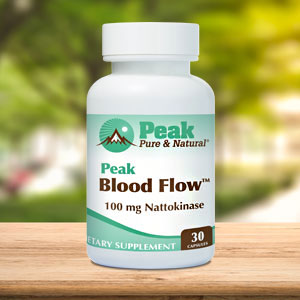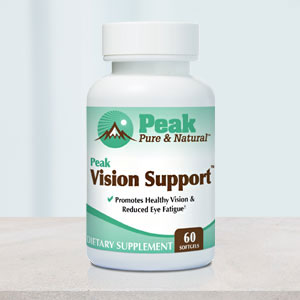Get Easy Health Digest™ in your inbox and don’t miss a thing when you subscribe today. Plus, get the free bonus report, Mother Nature’s Tips, Tricks and Remedies for Cholesterol, Blood Pressure & Blood Sugar as my way of saying welcome to the community!
The invisible factor fueling glaucoma

As you get older, your eyes are more vulnerable to disease — macular degeneration, cataracts, glaucoma. And if you have a genetic tendency toward age-related eye diseases, then you’re really at risk.
But beyond big, obvious risk factors for eye diseases like age and genetics, there’s an invisible factor influencing your vision health — air pollution.
Now, there’s plenty of evidence that air pollution contributes to lung diseases, cardiovascular disease and even Alzheimer’s. But recent research has really put a spotlight on the connection between eye diseases and air pollution.
Did you know, for example, that people in urban areas are 50 percent more likely to get glaucoma, an eye disease that can make you blind, than people in rural areas?
And a new study confirms once again that glaucoma is a very real risk for people living in polluted areas….
How air pollution contributes to the top cause of irreversible blindness
The latest research from University College London shows that people who live in areas with more air pollution have a higher risk for glaucoma.
The study included data from 111,370 people, who had eye tests between 2006 and 2010. Researchers compared the results of these eye tests to air pollution levels reported at their home addresses. Here’s what they found…
People living in the 25 percent most polluted areas had a six percent higher risk of developing glaucoma.
Now, I know six percent doesn’t sound like much at first. But glaucoma is the top cause of irreversible blindness worldwide. And when it comes to irreversible blindness, I think any increased risk is a serious one.
Why does air pollution play a part in this scary eye disease?
Well, researchers have a couple of theories. It could be because air pollution constricts blood vessels in the eye. Its ability to constrict blood vessels is why air pollution contributes to heart disease, after all.
It could also be because a form of air pollution called fine particulate matter has a toxic effect on the nervous system and/or causes inflammation, both of which could contribute to glaucoma risk.
Saving your eyesight from air pollution
Reading about air pollution’s negative impact on your health can feel disempowering sometimes. Short of moving to a rural area, what can you really do about it?
But there are ways to reduce your exposure to air pollution without moving. You can keep up with pollution levels through the EPA’s AirNow app and avoid spending a lot of time outdoors when they’re high, for example.
There are also ways to help your body detoxify from pollution exposure better. Broccoli sprouts are proven to help your body dispose of toxins it takes in from the air. And eating foods high in antioxidants, like berries, dark chocolate, veggies and green tea, can counteract the oxidative stress caused by air pollution.
If you’re concerned about your eye health in general, a 2016 study identified the top five nutrients for preventing age-related eye diseases. They are:
- Zinc
- Vitamin C
- Vitamin E
- Omega-3 fatty acids
- Carotenoids (like beta-carotene, lutein and zeaxanthin)
So, make sure to get plenty of these nutrients in your diet… or take a supplement. After all, your risk of eye diseases isn’t something you want to lose sight of.
Editor’s note: There are perfectly safe and natural ways to decrease your risk of blood clots including the 25-cent vitamin, the nutrient that acts as a natural blood thinner and the powerful herb that helps clear plaque. To discover these and other secrets of long-lived hearts, click here for Hushed Up Natural Heart Cures and Common Misconceptions of Popular Heart Treatments!
Sources:
- Common Aged-Related Eye Problems — Cleveland Clinic
- Air pollution linked to higher glaucoma risk — MedicalXpress
- The Relationship Between Ambient Atmospheric Fine Particulate Matter (PM2.5) and Glaucoma in a Large Community Cohort — Investigative Ophthalmology and Visual Science
- Glaucoma — Mayo Clinic














